40 Views
2017 Land Rover Discovery First Drive Review - An Englishman With Great Teeth

by
Matthew Guy
(IC: employee)
Published: March 14th, 2017
Share
Fast Facts
2017 Land Rover Discovery
3.0-liter V6, supercharged (340 hp @ 6,500 rpm, 332 lb-ft @ 3,500-5,000 rpm)
3.0-liter V6, turbodiesel (254 hp @ 3,750 rpm, 443 lb-ft @ 1,750-2,250 rpm)
Eight-speed ZF-supplied automatic, four-wheel drive
16 city / 21 highway / 18 combined (EPA Rating, MPG, Supercharged Gas)
21 city / 26 highway / 23 combined (EPA Rating, MPG, Turbodiesel)
17 mpg (Observed, Supercharged Gas)
20 mpg (Observed, Turbodiesel)
Base Price
$50,985 (Gas), $59,945 (Diesel) (U.S.)
As Tested
$73,240 (Gas), $76,690 (Diesel) (U.S.)
Prices include $995 destination charge
The Land Rover Discovery has, up until now, always been so veddy, veddy British. Since 1989, Land Rover mixed the Discovery’s bolt-upright styling with mountain goat off-road capability — not to mention a few features only people from the UK or its former colonies would understand.For 2017, the curry hook and other British quirks remain, but the purveyor of British SUVs has finally straightened the Disco’s teeth in search of wider appeal.
On first blush, it seems Land Rover has softened, declawed, and mollified the new Disco into a competitor of luxurious lightweights such as the Audi Q5. Sure, the Audi can bust a few snowdrifts on the school run, but it’s ill-equipped in terms of true off-road capability compared to the old mountain-goat Discovery.Fans of the Green Oval, then, will be relieved to hear engineers behind the 2017 Land Rover Discovery didn’t misplace their adventure handbook, seeing fit to equip the new Disco with all manner of rock crawling and sand-busting capability. Despite its fancy new clothes, this Brit can still get dirty.The Discovery will offer two engines in North America when it goes on sale in May. Buyers can choose between a supercharged gas unit or turbocharged diesel mill, both displacing 3.0 liters. The petrol gasoline engine is good for 340 horsepower at 6,500 rpm and nearly the same measure of torque, while the oil burner makes 254 hp at 3,750 rpm with a torque peak of 443 lb-ft arriving at a lowly 1,750 rpm. Both are equipped with ZF’s spectacular eight-speed transmission.
All models get Land Rover’s permanent four-wheel drive system with a standard locking centre differential. A rear locker is optional should buyers choose to select the $1,250 Capability Plus Package, which is available only on the most costly HSE Luxury trim. Buyers who want off-road cred should proceed directly to this trim level — do not pass Go, do not collect £164.32 ($200 USD).Properly equipped, the 2017 Land Rover Discovery has nearly a foot of ground clearance and an approach angle nearing 30 degrees. With wheel articulation reaching just a shade under 20 inches, the Discovery is adept at clambering over the gnarliest of off-road obstacles. Despite its new Rodeo Drive styling, the 2017 model will safely ford through 35 inches of water, over 7 inches more than the last year’s box-it-came-in model.
Land Rover’s Terrain Response system is now found in the Discovery, offering a bevy of different settings for various sans-pavement situations, such as rock, sand, and mud. Left to its own devices in Auto mode (and let’s be honest, most buyers will leave it in this mode), computers independently read what’s happening at all four wheels at a rate of 100 times per second.Land Rover’s planned route through the Utah desert took us through a series of dry riverbeds packed with silt, which Discovery laughed off as if it were a puddle at the mall. Later, we were instructed to jack the air suspension to its highest setting and put the 4×4 system in low range once we’d arrived at a series of rock crawling exercises. No manly yanks of heavy levers here; a few button pushes completed the tasks.
With the Terrain Response system in Rock Crawl mode, the Discovery inched its way up a steep rock face guided by my own measured steering inputs and modest prods of the accelerator. Terrain Response did all the hard work, meting out power to whatever wheel or wheels it deemed to have the most traction, and culminated with the Discovery resting at a steep angle with its right-front Goodyear Eagle F1 All-Terrain dangling about two feet off terra firma. JLR reps opened and closed the Discovery’s doors while the truck remained perched at this jaunty angle to prove the structure wasn’t enduring excessive flex despite its reach-for-the-moon stance.On a different set of rocks, we chose to engage the Discovery’s All-Terrain Progress Control. JLR’s boffins kept referring to it as ATPC, but they could’ve easily called it off-road cruise control, which is essentially its function. Similar to a hill descent system, ATPC keeps the Discovery to a maximum pre-set crawl speed, halting and resuming forward motion as it sees fit given the trail conditions. With the driver’s feet nowhere near the pedals, we scampered up and over a series of knobby Utah rocks.
Hitting the Coral Pink Sand Dunes State Park in southern Utah, so named for the color of the Navajo sandstone grains that create them, 4,000 acres of undulating dunes were laid out before us. Swirling winds bite their way through the nearby rocky cliffs, shredding sand from their surfaces and deposit it in the form of rolling dunes. It’s a desert within a desert at an altitude of 6,000 feet.Weaving our way through the alien dunes, drivers piloting a Disco equipped with the supercharged gasoline engine often found themselves at an advantage given its more rev-happy nature. This is not a knock on the diesel, a powertrain quieter on road than many gasoline mills, but a reinforcement that customers should simply choose the most appropriate engine for their expected adventures. Shod with nothing but its standard Goodyear tires, the Discovery blasted through grit (which had the consistency of icing sugar); its four wheels sending sand skyward in quantities sufficient to satisfy the personal hygiene needs of six Persian cats.
It’s 11 p.m. Do you know where your seats are? The new Discovery does. Armed with low-level artificial intelligence (I’m using AI in a broad sense), the Disco’s seats incorporate 23,000 lines of software code for all sorts of trickery. Essentially, the seats know where they are at any given time. At a rest stop on the Utah/Arizona border, I pressed the button to fold one half of the split middle row. Recognizing the front passenger seat was too far astern to allow for fully folding of the middle row, the Discovery paused the middle-row seat’s folding cycle, automatically scooted the front passenger seat forward like a dutiful English butler, then resumed folding the middle row. Thirteen different systems work in tandem to carry out this task.Make all the fun you want about this level of British electronic wizardry going haywire once the warranty runs out, but the reality is this: by incorporating gee-whiz technology into a slick-looking, off-road capable package, JLR has suddenly opened up the Disco’s potential market to include wealthy soccer parents and folks who want a machine to crawl over the loam to go fox-hunting. Packing all this tech and looking for all the world like a junior Range Rover, it’s easy to predict JLR selling a ton of these to folks who never would’ve considered the old, boxy Disco.
Thanks to a wheelbase spanning a vast 115 inches, seven adults actually fit in the three-row Discovery. It wouldn’t take them across country in the laps of luxury comfort. But across town? Sure. The perception of space, light, and vision certainly help, as does the research JLR invested in how families actually use their vehicles. The Disco has always been known for its second-row stadium seating and vomit-inducing third-row jump seats. Now, youngsters in a booster seat sitting astern in row three can actually see the dashboard all the way up front, which helps to prevent a repeat appearance of their lunch from Chuck E. Cheese.There are a few ergonomic excrescences in the new Discovery, mostly thanks to details getting lost in translation before its migration across the pond. The volume knob is a long reach for the driver, residing exactly where the release for the behind-the-HVAC hideaway should be, which is far closer to the passenger than to the driver. Swap the steering wheel to its British location, though, and the positioning makes sense.
So, too, does the placement of the joystick controlling the power tilt/telescope steering wheel. Generally located on the outer edge of the steering column, towards the driver’s door, the Discovery’s placement of this control faces the passenger and leads to unnecessary fumbling. Again, placing the steering column in the right side of the cabin erases this complaint.Elsewhere, when the Utah sun hits the chrome trim framing the shifter for Disco’s eight-speed automatic, the glare in the driver’s eyes is apocalyptic. Burnished metal, similar to the stuff surrounding the air vents, would be a better choice in this spot.If I’m bringing up these points, though, you know I’m stretching for something to carp about.The interior of the Discovery is hewn in fine style surrounding user-friendly gauges and an easily operable centre stack. There’s an interesting texture to the dashboard and A-pillar coverings. Its soft-touch surface is almost like a Gore-Tex cloth, and I freely admit to caressing it unnecessarily. This material will produce no glare — or fingerprints for that matter. Twin gloveboxes face the passenger, the upper of which completely disappears until summoned to open by way of a penny-sized button. Pointing to JLR’s desire for the Discovery to broaden its appeal, no fewer than nine USB ports pepper the interior.
Traditional British cues pop up from time to time, such as the deep tick-tock turn signal indicator that emanates from somewhere deep within the dash and sounding for all the world like a reassuring grandfather clock. The curry hook remains in the passenger foot well, ready to accept a bag of takeaway. And the rear license plate is still offset to the left. Longtime Land Rover owners will find a comforting mix of the familiar, while new customers will find a great deal of modernity.Upper-crust Range Rovers always had a split tailgate, a point of prestige for many Brits who like somewhere to sit and don their wellies while the dogs have a run. Now the Discovery has one as well … kind of. A powered inner load floor, configured to either automatically deploy or drop with the touch of a button, folds out and can bear over 600 pounds of pork pies or two well-fed Americans. Another button in the rear cargo compartment allows Discovery owners to fiddle with the optional air suspension, lowering the vehicle to help with loading heavy items or hooking up to a trailer. Left to its own devices, the air suspension will lower the vehicle 0.6 of an inch when the driver selects Park and unbuckles their belt, then kneel another inch towards terra firma when they open the door.
Speaking of towing, a gasoline powered 2017 Land Rover Discovery is rated to haul 8,201 pounds, a remarkable achievement for a machine whose silhouette apes many namby-pamby crossovers. That tow rating far outstrips brawnier looking machinery, such as a Pentastar-equipped Ram 1500. Optional Advanced Towing Assist works and feels like the trick Pro Trailer Backup Assist on F-150 trucks.A yaffle of electronic nannies keep drivers in their designated lanes and can stop the car before it runs over any peasants. Features like park assist and the aforementioned reversing-the-trailer assist is made possible by electric steering cribbed from the Range Rover.Three trim levels will be available in the U.S., with the entry-level SE variant starting at $49,990 — about a grand less than a comparable LR4. It’s a $7,000 walk to the gasoline-powered HSE variant. A top-of-the-line, diesel-powered HSE Luxury model will set you back around $66,000.Purists may screech bloody murder about the Discovery’s newfound sense of style, but its off-road capability hasn’t been diminished not one whit. In the past, the Disco was styled with practicality and a heavy dose of tradition in mind. Phil Simmons, Studio Director of Exterior Design, told me at dinner that off-road capability is still at the fore of Discovery’s mission. However, designers were now free to justify a design cue’s existence based solely on it looking right. To me, that puts the exclamation point on Land Rover’s shifting attention to design and not just utilitarian function. It’s possible for something to be pretty and functional at the same time. Look at IKEA furniture, for example, or anything from Pagani.
It’s for this reason I think Land Rover has a winner on its hands, as the new Discovery will appeal to new buyers on Wilshire Boulevard while continuing to placate the scattered purist who wants to ford through 3 feet of water on their way to the English countryside. Features like intelligent folding seats and a FitBit-esque wristband to supplement the key fob (yes, that’s an option) may not matter to the rich Brummies who’ve had a Disco since 1989, but they will matter a great deal to the California set looking to keep up with the Kardashians.It’s a shrewd gamble, but one which will pay off handsomely on JLR’s balance sheet. This Englishman got his teeth fixed, but he still knows how to don his wellies and go fox-hunting.
#2017LandRoverDiscovery
#4x4
#British
#Discovery
#FirstDrive
#LandRover
#LandRoverDiscovery
#LuxurySuv
#Off-Road
#SUV

Matthew Guy
Matthew buys, sells, fixes, & races cars. As a human index of auto & auction knowledge, he is fond of making money and offering loud opinions.
More by Matthew Guy
Published March 14th, 2017 2:00 PM
Latest Car Reviews
Read moreLatest Product Reviews
Read moreRecent Comments
- Theflyersfan I think color is FINALLY starting to return to car lots. After what seems like over a lost decade of nothing but shades of gray, whites, and black, I'm seeing a lot more reds and blues creeping into luxury car lots. Except Audi and Volvo. They still have at least 6-8 shades of gray/silver. But they at least have a nice green. Honda and Acura seem to have a bunch of new colors. And all carmakers need to take a serious look at the shades of red seen at the Alfa Romeo lot and tell themselves they want that because that looks amazing.
- Bd2 Well, it's no Sonata, no does it have the panache of the Optima.
- Teddyc73 "eye-searingly"?
- Teddyc73 I applaud anyone who purchases a vibrant, distinct or less popular color. We need these people. Our road ways have turned into a dreary gloomy sea of white, black, silver and greys, most with the equally lifeless black wheels. Mr Healey is guilty of contributing to this gloom apparently. It looks like a black and white movie across the nation when grouped with our grey houses with grey interiors. Totally dull and lifeless. And what is with this awful hideous trend of dull grey with black wheels showing up everywhere? It's on everything. Just awful. Come on people! I'll keep my Ram 1500 with it's deep rich sparkling Western Brown paint as long as I can.
- Shipwright As my Avatar shows I had an '08 GT 500, Grabber Orange convertible. I now own a '12 GT 500 Kona Blue coupe.


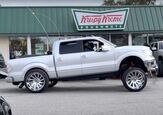








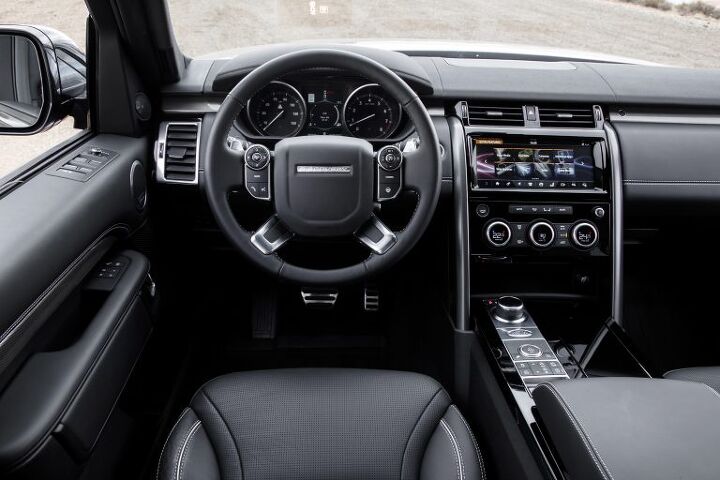















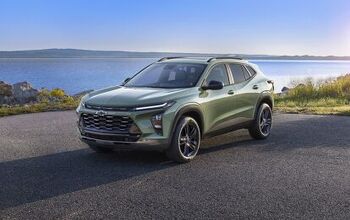
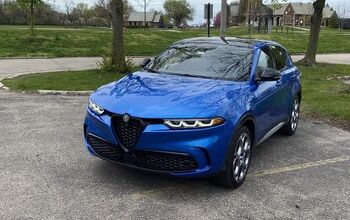
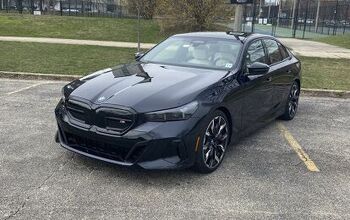
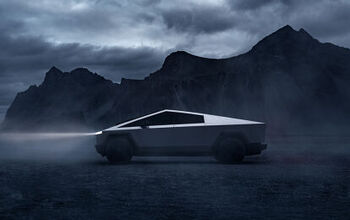


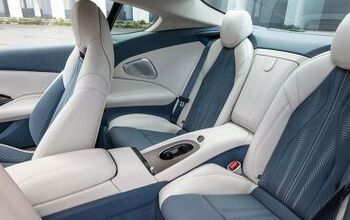
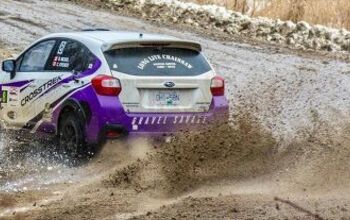


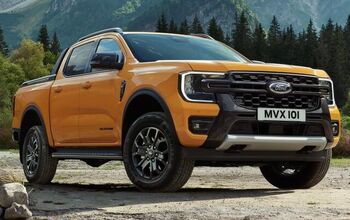
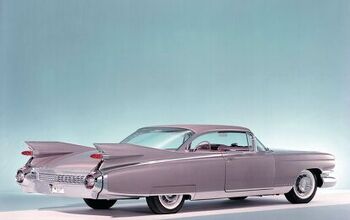
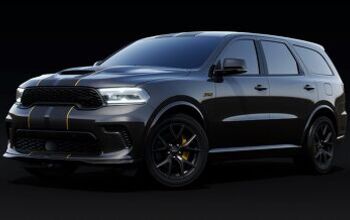


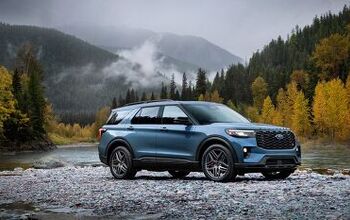
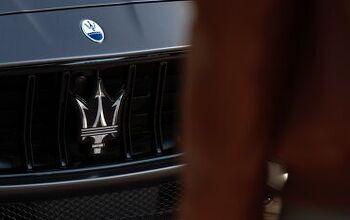
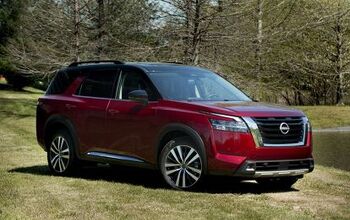
Comments
Join the conversation
I know commenting rules. How about you do not propagate hate in your articles and I won't attack the author for doing that? Deal?
The thing that made old Discos cool were those rear roof windows wrapping around the sides and that tall, upright stance. They looked serious. This looks like a toy. For the money you could buy a used 4Runner and Cayenne and have better road manners and better off-roadiness. Plus the 4Runner would work through hell and back.